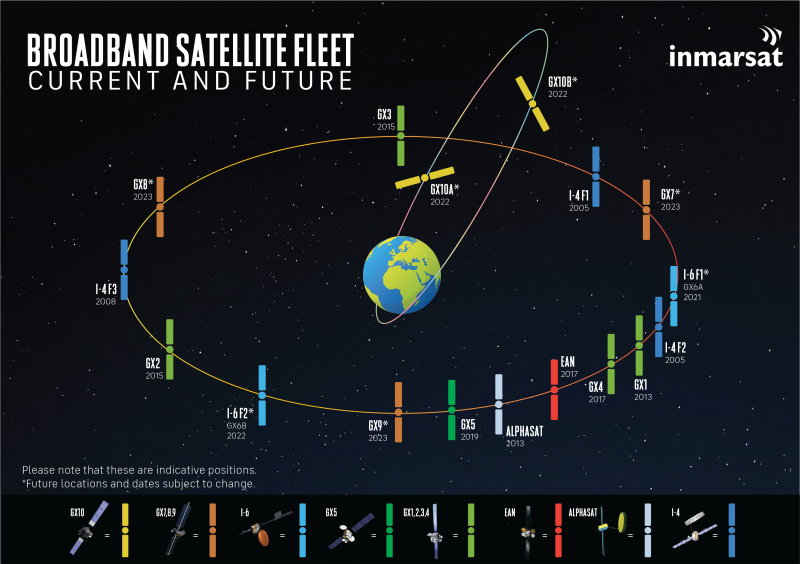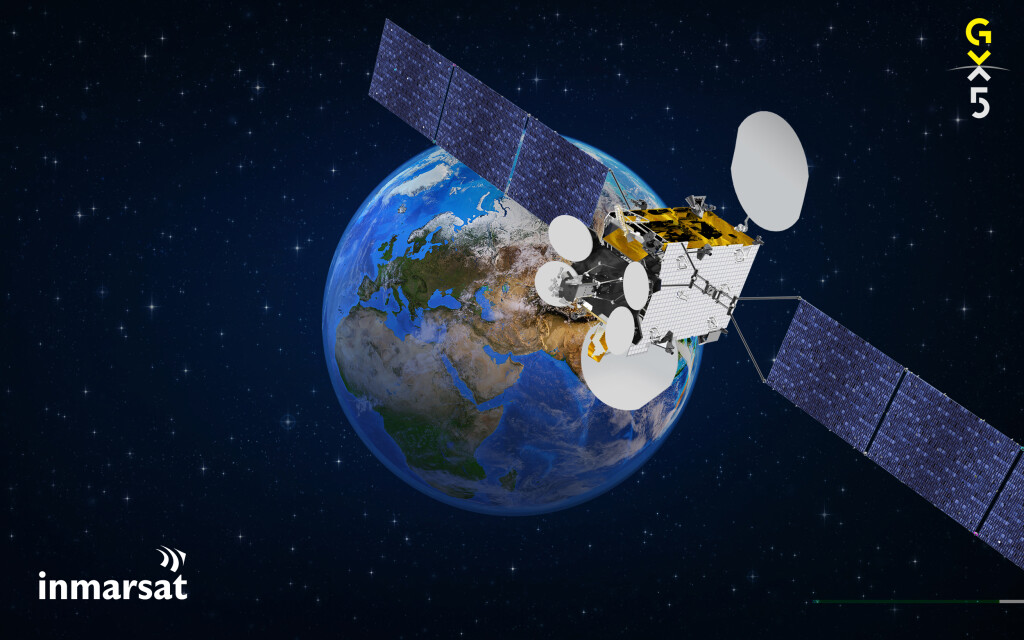Inmarsat is primed to meet demand for seamless satellite coverage in the far northern latitudes
Satellite communications usage is increasing steadily across marine industries including the commercial fishing industry. “We have seen usage increase 70 percent in the last year, and that doesn’t show and signs of slowing down,” says Eric Griffin, vice president of Offshore Energy and Fishing, at the Maritime Division of Inmarsat. “If anything, it’s going to be increasing.”
To meet the projected demand, Inmarsat launched a new satellite in December 2021, with a companion due in 2022. “We just launched a satellite before Christmas,” says Jonathan Sinnatt, director of communications at Inmarsat. “The I-6 F-1, and another going up later this year. Each of those will have more capacity than all out previous satellites combined. “Then in 2023 we have the GX7 GX8 and GX9, going up, along with our GX10a and 10b.”
Inmarsat’s GX10a and 10b payloads will be aboard two American made, Northrup Grumman satellites being launched by Space Norway. Unlike Inmarsat’s constellation of geostationary satellites, the GX10 payloads will be in highly elliptical orbit (HEO) above the Arctic.

“Our geostationary satellites give global coverage,” says Sinnatt. “But as you get closer to the poles, the angle becomes more acute and the coverage is not as good. The GX10 payloads will be on two satellites in a highly elliptical orbit, which will take them high over the North Pole and then down very fast around the South Pole. With two of them you will always have coverage over the Arctic.”
Sinnatt points out that while the GX10 payloads will not be on Inmarsat satellites, they will still connect seamlessly to the Global Express Network. “So, from a customer’s point of view, you could be in the middle of the Atlantic and then sail north to the Arctic and not see any difference in service,” he says.
According to the U.S. National Snow and Ice Data Center, Arctic ice cover has been shrinking steadily for decades, resulting in a dramatic drop in the last 40 years from historical averages over the past centuries.
“Based on the linear trend, since 1979, December has seen a loss of 1.88 million square kilometers (726,000 square miles). This is equivalent to about three times the size of Texas,” says the organization’s website.
One group of researchers from Alaska and Norway predicts that while cod and pollock are unlikely to expand into the Arctic, several species, including Bering flounder and snow crab, have a high potential to move into the northernmost ocean.
According to Inmarsat’s Eric Griffin, the company is actively selling its expanding services to Alaska fishermen. “And not just the factory trawlers,” he says. “We are talking to crabbers as well, including Jake Anderson of ‘Deadliest Catch,’ and we’re talking to multinationals like Clearwater.”

Its imminent Arctic coverage is just part of Inmarsat’s investment in creating a seamless global coverage system called Orchestra, which will include land-based 5G coverage and a new constellation of low earth orbit (LEO) satellites.
“All of this is backward compatible,” says Jonathan Sinnatt. “So if you invested in our system in 2016, you don’t have to buy new hardware.”
Sinnatt points out that customer demand is guiding the company’s investment strategy.
“The arctic is opening up,” he says. “That’s why we went in with Space Norway — so that when the demand hits, the capacity is already there to meet it.” That demand is not just for access in remote areas, Sinnatt notes, it is demand for crew connectivity, engines diagnostics and increasing internet of things requirements that are part of a digitalization of operations in all marine industries.
“Operational efficiency is of vital importance and a big reason to bring Global Express aboard,” says Sinnatt.
According to Griffin, Inmarsat is offering more than satellite service, but also a path to technological advancement. “Customers can leverage our systems in order to grow,” he says.







